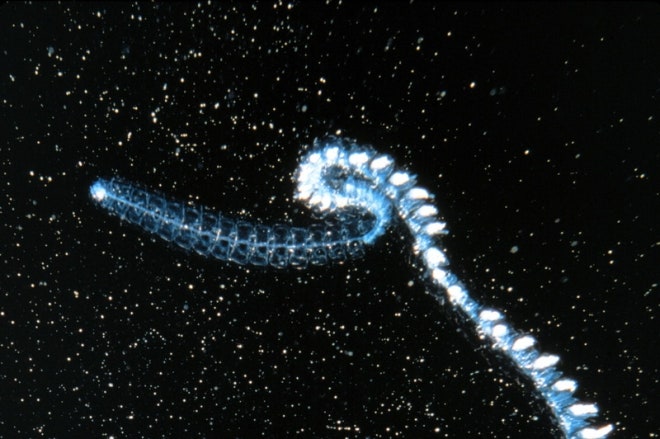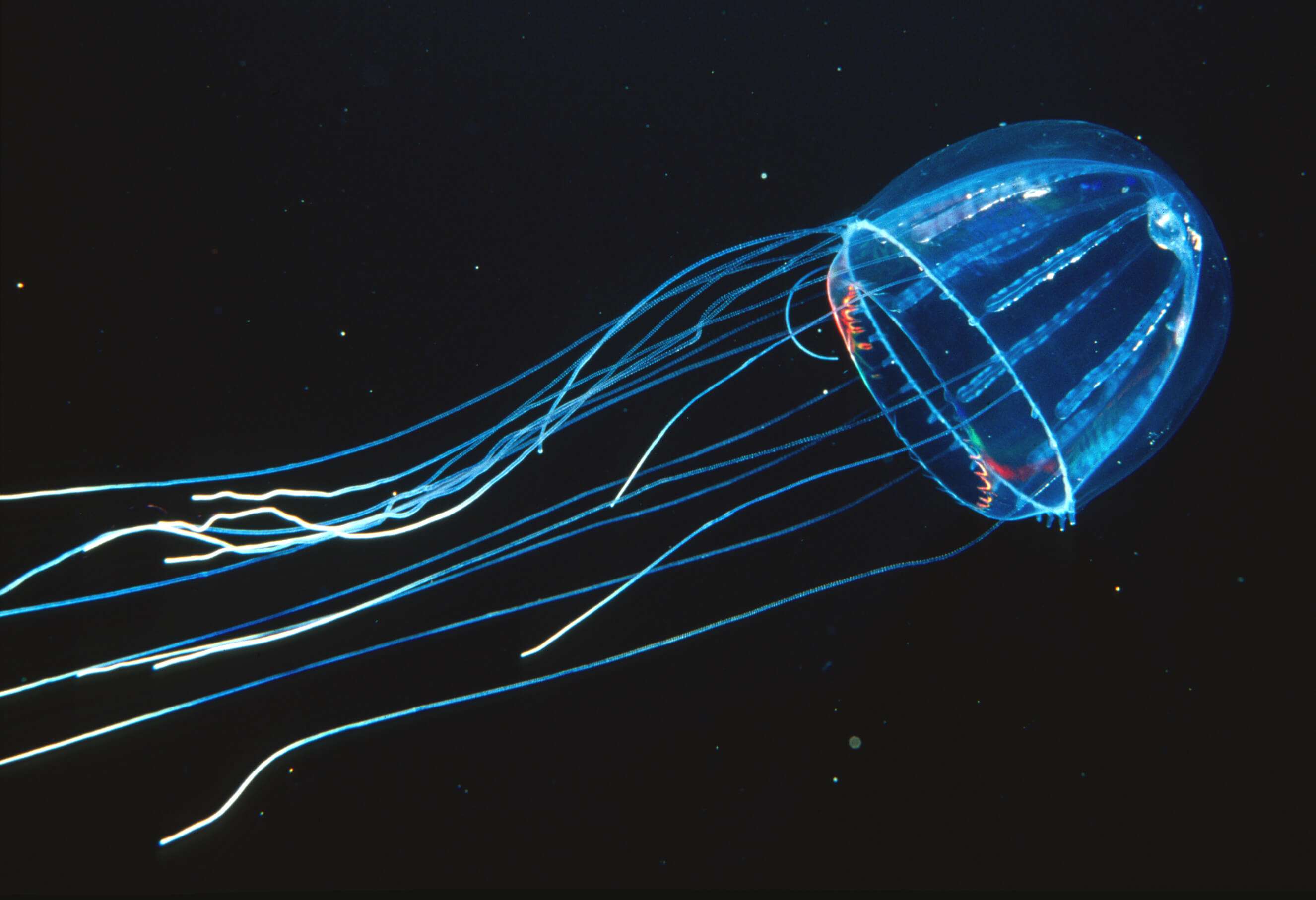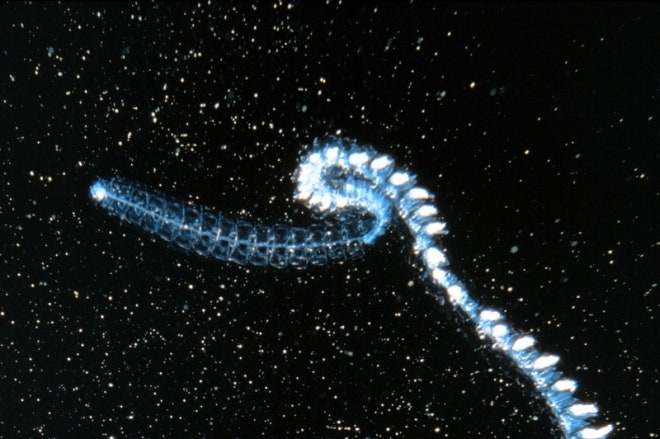Imagine a world where the ocean’s depths are lit not by the sun but by the living organisms themselves. Welcome to the mesmerizing realm of bioluminescence, where creatures create their own light to survive in the dark abyss. This underwater light show is not just a spectacle; it’s a vital tool for survival in one of Earth’s most extreme environments.

Image credit: WIRED
The Evolution of Light in the Abyss
Bioluminescence is a phenomenon that has evolved independently at least 40 times across various marine species. This incredible adaptation showcases its importance in the survival of deep-sea creatures. For instance, ray-finned fishes alone have evolved bioluminescence 27 separate times. This repeated evolution highlights how crucial this trait is for thriving in the ocean’s depths.
The Science Behind the Glow
The magic of bioluminescence comes from a chemical reaction involving luciferin (a light-emitting molecule) and luciferase (an enzyme). When these two combine, they produce light. Most bioluminescent organisms emit blue-green light because these wavelengths travel farther in water. However, some species, like the dragonfish, can emit red light, which is invisible to many deep-sea creatures. This unique ability gives them an edge in hunting and evading predators.

Image credit: Monterey Bay Aquarium
The Many Uses of Bioluminescence
Bioluminescence serves multiple purposes in the deep sea. Predators like the anglerfish use bioluminescent lures to attract prey, while others, like the lanternfish, use distinct light patterns to recognize mates. Some creatures, such as the vampire squid, release glowing fluids to confuse predators, while others drop bioluminescent limbs as a distraction. These strategies show how versatile and essential bioluminescence is for survival.
Counter Illumination: The Art of Camouflage
In the deep sea, where faint light filters down from the surface, some animals use bioluminescence to blend in. Hatchetfish, for example, have light-producing organs along their bellies that match the light from above. This counter-illumination makes them nearly invisible to predators lurking below. It’s a clever way to stay hidden in a world where being seen can mean being eaten.
Common Misconceptions Debunked
One common misconception is that bioluminescence and fluorescence are the same. However, fluorescence requires an external light source, while bioluminescence is a self-contained chemical reaction. Another myth is that all marine organisms emit bioluminescence. In reality, only a fraction of marine life, including certain fish and bacteria, possess this ability.
Human Connections and Inspirations
Bioluminescence has captivated humans for centuries, inspiring both art and science. Artists have created installations mimicking the glow of deep-sea creatures, while scientists like Edie Widder have used bioluminescent light to capture footage of elusive giants like the giant squid. The study of bioluminescence continues to reveal the secrets of the deep, offering insights into one of nature’s most fascinating phenomena.
References:
8 Beautiful Bioluminescent Creatures From the Sea | WIRED – link
Illuminating the facts of deep-sea bioluminescence | Stories … – link
How bioluminescence works in nature – link
Categories: Do you know, Marine Biology, Nature, Science
Tags: Bioluminescence, Deep-Sea Creatures, Marine Biology, ocean science
Country of Origin: World
Topic: Bioluminescence in Deep-Sea Creatures



Your article helped me a lot, is there any more related content? Thanks!